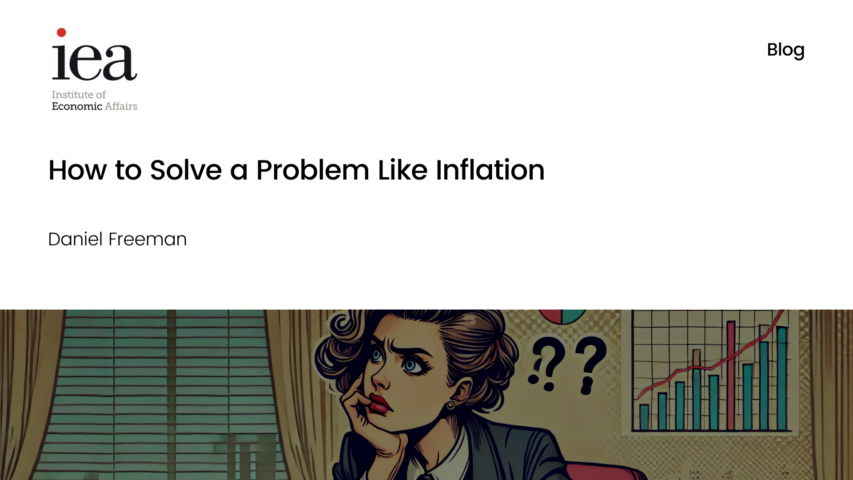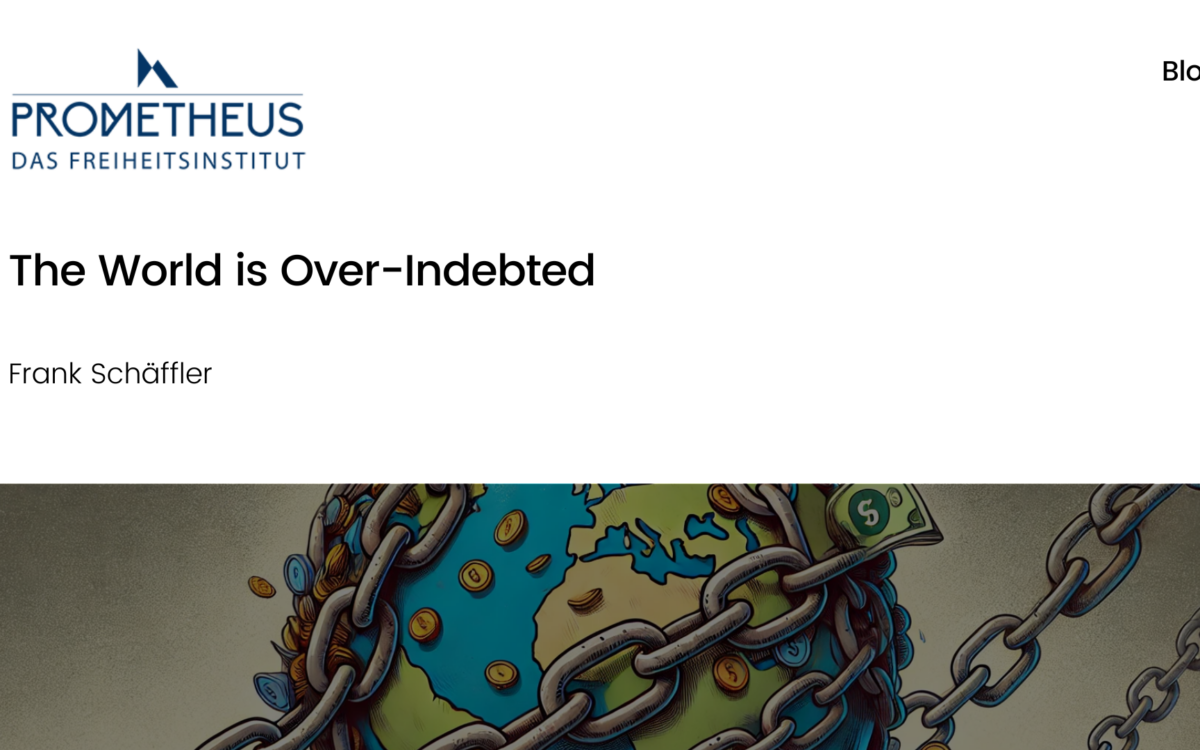How to Solve a Problem Like Inflation

How to Solve a Problem Like Inflation
Daniel Freeman // 31 May 2023
After three decades of relative price stability, inflation has returned with a vengeance to the world’s advanced economies. The trend began in early 2021, and though inflation rates seem to have peaked in the UK, the US and the EU, it remains unclear how long it will take for price stability to return.
Perhaps the most pressing questions facing economists today therefore are, firstly, why has inflation spiked? And secondly, what ought governments and central banks do to tackle the problem?
In answer to the first of these questions it has become fashionable among parts of the Left to attribute inflation to large companies using recent world events such as the war in Ukraine as an excuse to gouge prices – an idea knows as ‘greedflation’.[1] While in answer to the second, the policies of the seventies such as price controls, are starting to make a comeback.
Willem Buiter’s article in the most recent edition of Economic Affairs offers a less moralistic explanation of inflation’s origins while calling on central bankers to learn from the policies that succeed in bringing down inflation in the eighties rather than imitating those that failed in the seventies.
Buiter’s analysis of the origins of inflation focuses on a series of shocks to demand, such as the stimulus adopted by all major economies during the pandemic, along with shocks to supply, which include long-term effects and short-term ones. He argues that monetary stimulus during the pandemic was also too aggressive and continued for too long; In the US, for example, Buiter points out that FED’s QE program continued to buy bonds until March 2022, over a year after inflation had started steadily ticking up.
The short-term shocks to supply include the effects of the war in Ukraine, which has disrupted the trade in vital commodities, and China’s Zero Covid strategy, which reduced output in the world’s largest exporter of manufactured goods. These at least are transitory and have hopefully already passed their peak impact on inflation figures. But Buiter also identifies long-term drags on supply, including the effects of climate change (and state attempts to curb it), the process of deglobalisation resulting from heightened geopolitical tensions between the US and China, and finally aging populations in advanced economies and now increasingly in middle-income ones as well. This last factor not only reduces the ratio of workers to dependents, but also the propensity for saving, as the elderly tend to save less than working-age people. These factors combined mean that, in Buiter’s view, the age in which central bankers can maintain ultra-low interest rates without risking inflation is gone for good.
Buiter suggests that part of the explanation for central banks’ inability to bring inflation under control has been that some are in a state of fiscal dominance which he defines as ‘when the central bank is forced to set its policy rates, fund the government and engage in monetary issuance in ways that are incompatible with the pursuit of price stability and cannot be justified by fiscal considerations.’ Essentially, nominal bank independence is not accompanied by a culture in which bankers are able to resist government pressure to use monetary measures improperly.
He cites two case studies of disastrous economic consequences resulting from this situation. The first is Argentina. Buiter attributes the Argentine central bank’s decision to abandon its target of hitting 5 per cent inflation by 2020 to government pressure, and continued use of monetary measures amounting to over 7 per cent of GDP to finance the fiscal deficit. This resulted in the worst of both worlds as the government was still unable to avoid default in May 2020 while inflation has since soared past the 100 per cent mark.
The second example is Sri Lanka. Here the government, suffering from a serious case of naïve Lafferism, sought to boost economic growth by cutting already low taxes. However, when the hoped-for growth failed to materialise, the Central Bank of Sri Lanka funded the deficit through monetisation – essentially buying up government debt. This proved unsustainable as inflation spiked eventually leading to a default and the overthrow of the government in July 2022 following a series of massive street demonstrations.
Though these nightmare scenarios come from poor and fragile economies, the temptation of fiscal capture hangs over many central banks in advanced economies as well. Buiter argues that the European Central Bank has been particularly vulnerable to political pressure, but that neither the Bank of England nor the Federal Reserve is immune. His argument is not that central banks should never buy public debt or lend to the government but that they must be able and willing to say ‘no’ if not doing so threatens their price stability mandates.
Buiter’s prognosis is a grim one, certainly more so than the recent conclusions from the Shadow Monetary Policy Committee. Central banks have been holding interest rates too low, for too long and since Covid have been too willing to acquiesce to government pressure to use monetary measures to finance spending. We are told we cannot expect inflation to return to its target rate unless interest rates are substantially increased which will in turn induce a recession. If central banks put off this bitter medicine the result will be inflation expectations becoming un-anchored as employees and producers come to expect high inflation for the foreseeable future and adjust their wage and price demands accordingly. If this does occur the monetary tightening necessary to restore price stability will have to be even harsher and last longer.
Despite being no monetarist, in this Buiter echoes Friedman’s argument that cheap money in times of high inflation is a lot like alcoholism; when you try to ween yourself off the unpleasant effects are felt immediately while the benefits take longer to materialise. But now, as then, the longer the cure is delayed the harder the path to recovery.
_____
[1] Perhaps surprisingly, the advocates of this theory do not attribute decades of relatively low inflation to corporate altruism.
This article appeared first on the IEA’s blog.
EPICENTER publications and contributions from our member think tanks are designed to promote the discussion of economic issues and the role of markets in solving economic and social problems. As with all EPICENTER publications, the views expressed here are those of the author and not EPICENTER or its member think tanks (which have no corporate view).



